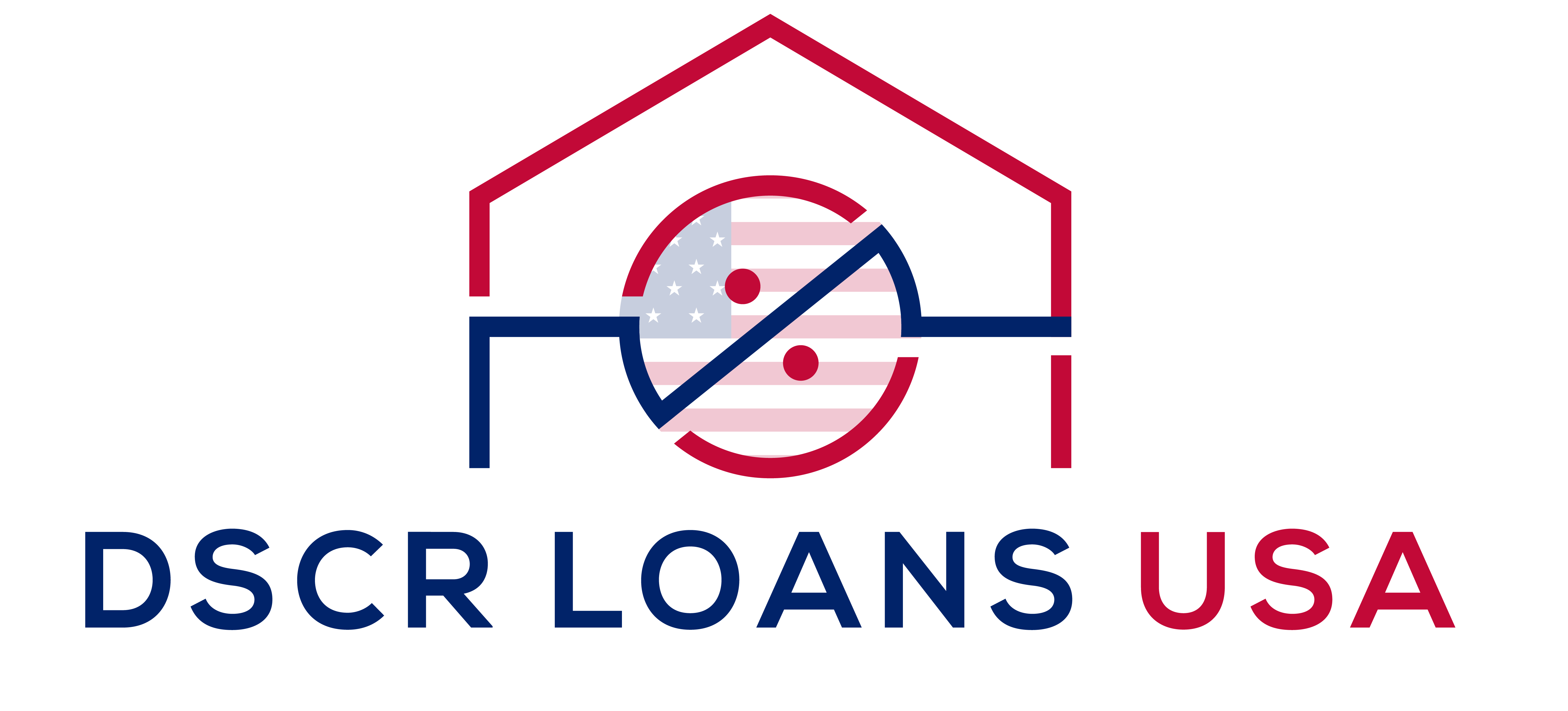Wondering how to get a dscr loan Ohio?
As a real estate investor, the key to your investment may lie in utilizing the rental income your properties yield.
This guide cuts through the complexity, showing you the exact qualifications, application process, and strategic tips for securing a how-to get a dscr loan in Ohio. Put your property income to work and sidestep the hurdle of personal debt with the insights you’ll find ahead.
Key Takeaways
- DSCR loans in Ohio cater to property investors by basing loan eligibility on rental income rather than personal income, targeting a minimum Debt Service Coverage Ratio (DSCR) of 1.0, but sometimes accepting as low as 0.75.
- Qualifying for a DSCR loan requires a property investor in Ohio to meet criteria such as a minimum FICO score of 660, a 20% down payment, sufficient rental income, and passing a property appraisal.
- The DSCR loan application process in Ohio is streamlined and involves providing necessary documentation, especially about the property’s income, and lenders often offer flexibility in financing multiple properties with portfolio loans.
Understanding DSCR Loans in Ohio

Picture this: you’re a property investor with a strong rental income, but you’re also burdened with significant personal debt. Traditional lenders focus on your personal finances, making it difficult for you to secure a loan. But what if there was an alternative? Welcome to the world of DSCR loans in Ohio! These loans are based on the income generated by the property instead of your personal income. This unique feature makes DSCR loans an attractive alternative to traditional lending options.
And in a state like Ohio, known for its diverse real estate market and favorable rental yields, the flexibility offered by DSCR loans is particularly relevant. So, if you’re an investor with significant personal debt but strong rental income, a DSCR loan could be your ticket to success.
The Basics of Debt Service Coverage Ratio (DSCR)
So, what is the Debt Service Coverage Ratio (DSCR), and why is it so important for rental property investors? The DSCR is a key metric that indicates the ability to cover mortgage debts with rental income. A ratio above 1.0 suggests the property generates sufficient income to pay off its debt. The DSCR is calculated by dividing the property’s gross rental income by its total debt service, thereby measuring the cash flow available to cover debt obligations.
While a DSCR of 1.0 is generally the minimum requirement, some lenders in Ohio, like Griffin Funding, may have different thresholds such as accepting a DSCR as low as 0.75, potentially at the cost of higher interest rates. Factors such as:
- gross rental income
- operating costs
- property tax rates
- borrowing amounts
all play a role in influencing the DSCR. By managing these factors effectively, you can enhance the ratio and secure your DSCR loan.
Why Choose a DSCR Loan for Your Ohio Investment Property
With high rents relative to property values, Ohio’s strong rental market makes it an attractive destination for investors looking at DSCR loans. The eligibility for a DSCR loan is based on the property’s income potential rather than the borrower’s personal income, making it a favorable option for investors. Moreover, the interest rates for DSCR loans in Ohio are typically only 1% to 2% higher than those for traditional mortgages, ensuring that investment expenses remain manageable.
So, if you’re a property investor in Ohio, choosing a DSCR loan for your investment property could be a game-changer!
Eligibility Criteria for Ohio DSCR Loans

So, you’re interested in DSCR loans and want to know if you qualify? Let’s delve into the eligibility criteria. To qualify for a DSCR loan in Ohio, you need to achieve a minimum DSCR of 1.0. But don’t worry if you fall slightly short! Some lenders in Ohio allow a DSCR as low as 0.75, offering flexibility to borrowers.
In addition to the DSCR, there are primary qualification criteria, which typically include a minimum FICO score of 660 and a 20% down payment. A property appraisal is also a crucial part of the DSCR loan process in Ohio. It helps determine the loan value and is paired with the requirement for a minimum down payment.
Minimum Credit Score and Financial History
When it comes to securing a DSCR loan in Ohio, your credit score matters. The minimum credit score typically required is 660. However, if you’re aiming for the highest Loan-To-Value (LTV) that DSCR supports, a credit score of 720 is required. If your credit score is lower, you may have a lower available loan-to-value ratio and a higher interest rate for a DSCR loan. It’s important to keep this in mind when considering financing options..
So, improving your credit score can lead to better loan terms.
Down Payment Expectations
Now let’s talk about down payments. The minimum down payment required for DSCR loans in Ohio is typically 20% of the property’s purchase price. This expectation allows you to finance your properties with a relatively low down payment. But did you know you can use funds from brokerage and retirement accounts to meet down payment and closing cost requirements?.
Meeting the minimum down payment expectation is crucial to secure favorable loan terms.
Rental Income and Cash Flow Considerations
A crucial aspect when securing a DSCR loan is the rental income your property can generate. DSCR loans in Ohio are beneficial in scenarios where rental income is high in comparison to the property values. Lenders in Ohio have varying minimum DSCR requirements. For instance, some may approve a DSCR loan with ratios as low as 0.75, indicating a more flexible approach towards assessing rental income and accommodating varying cash flow levels.
So, the more rental income your rental properties can generate, the higher your chances of securing rental loans, such as a DSCR loan!
Calculating Your DSCR Loan Amount

The next step in your DSCR loan journey is calculating the loan amount your rental property purchase or refinance will qualify for. You can do this using a DSCR loan calculator, which calculates the loan amount based on the property’s income and debts.
In Ohio, an investor’s loan eligibility is determined by calculating the DSCR using the property’s net operating income. Here’s how it works:
- Divide the property’s gross rent by its debts.
- Ohio DSCR lenders base loan calculations on the lower of in-place rent or market rent to assess the amount one can borrow.
- Additionally, lenders may include a yearly maintenance expense, typically $500 or $1,000, in the DSCR calculation to account for property upkeep costs.
Maximum and Minimum Loan Amounts
Now that you know how to calculate your DSCR loan amount, let’s discuss the maximum and minimum loan amounts. The minimum loan amount for most DSCR lenders in Ohio typically starts at $75,000. However, for a single property loan, some lenders may offer DSCR loans starting as low as $65,000.
On the higher end, DSCR lenders in Ohio typically provide loans up to a maximum amount of $5,000,000 for qualified borrowers. The range of loan amounts between different DSCR lenders can vary, providing borrowers with a variety of options to choose from.
Loan to Value (LTV) Ratio
Another critical aspect of DSCR loans is the Loan-to-Value (LTV) ratio. DSCR loans in Ohio can offer an LTV ratio up to 80%, allowing borrowers to finance a large portion of the property’s value. Ohio DSCR loan providers typically seek LTV ratios of 80% or lower, and for certain products like a cash-out refinance, the maximum can go up to 75%. Remember, a lower LTV requirement mandates a higher down payment from the borrower, specifically a 25% down payment in such cases.
Applying for a DSCR Loan in Ohio

Ready to take the leap and apply for a DSCR loan in Ohio? The process is straightforward. To receive an instant quote and pre-approval letter, you are required to submit a DSCR loan application. Remember, your credit is pulled after e-signing a credit release authorization.
It’s also recommended to borrow through an LLC when applying for a DSCR loan through Easy Street Capital. The application process generally takes 1-2 business days, providing a swift turnaround for eager investors.
Preparing Necessary Documentation
Applying for a DSCR loan goes beyond filling out an application form; you’ll also need to prepare necessary documentation. DSCR lenders in Ohio may require liquidity verification and request bank statements to ensure adequate funds for down payment and other costs. This verification can also include up to three months of bank statements, which can include brokerage and retirement accounts to confirm financial capability for both down payments and closing costs.
While you won’t need to verify personal income, you must disclose information regarding the property’s potential income to calculate the DSCR.
Finding the Best DSCR Lenders in Ohio
Choosing the right lender is crucial when applying for a DSCR loan. Some DSCR lenders in Ohio offer benefits such as no requirement for income verification and the option for interest-only payments, appealing to investors seeking minimal documentation and flexible payment options. Interest rates offered by DSCR lenders in Ohio may depend on the DSCR ratio, with better rates potentially available for properties demonstrating lower risk through higher DSCR ratios. Quicker closing times are an important feature of Ohio DSCR lenders, enabling real estate investors to swiftly move forward with income generation from their investment properties. OfferMarket Capital is recognized as a leading DSCR lender in Ohio, indicating the robust presence and competitive services available in the Ohio DSCR loan market.
The Application and Approval Process
The application and approval process for a DSCR loan is largely based on the income-generating potential of the property rather than the personal income of the investor. Verifying the potential income of the property is a pivotal step in the DSCR loan application process to determine the debt service coverage ratio.
An appraisal report is also required during the DSCR loan application to assess the property’s value, ensuring that the loan amount is appropriately matched with the property’s income potential.
Financing Multiple Properties with DSCR Loans

If you’re an investor with multiple properties, DSCR loans can be a boon. In Ohio, strong rental markets with high rents relative to property values contribute to better debt service coverage ratios, which support higher loan-to-value ratios for financing multiple properties. DSCR loans provide Ohio real estate investors with the opportunity to expand their property portfolio without the need for traditional income verification through tax returns or pay stubs.
However, keep in mind that market volatility can lead to higher interest rates and potentially lower loan-to-value ratios for DSCR portfolio loans.
Portfolio Loan Benefits
Portfolio loans come with their own set of benefits. A DSCR portfolio loan may offer a lower minimum loan amount for each property within a portfolio, making it more accessible for investors with multiple properties. For individual properties within a portfolio, a DSCR loan can recognize an As Is value allowing for potential financing advantages.
Despite the potential for higher interest rates and a lower LTV during market volatility, portfolio loans can still offer advantageous terms for property investors.
Meeting Portfolio Loan Criteria
When it comes to meeting portfolio loan criteria in Ohio, there are a few things to keep in mind. For individual properties seeking a DSCR loan, the standard minimum loan amount is typically $75,000. However, when financing a portfolio of two or more properties, the minimum loan amount can be as low as $50,000 per property, which is lower than the standard single-property minimum.
Additionally, in Ohio, there is no set maximum number of properties that an investor can include in a portfolio DSCR loan, offering flexibility to finance large portfolios with these loans.
Strategies to Optimize Your DSCR Loan Terms
With the right strategies, you can optimize your DSCR loan terms. This involves:
- Evaluating the financial viability of the property by analyzing its income and expenses
- Implementing risk management strategies, such as maintaining cash reserves for unexpected vacancies or repairs
- Choosing a lender who is experienced in DSCR loans and understands your investment strategy
By following these steps, you can maximize the benefits of your DSCR loan investment.
Additionally, refinancing DSCR loans might provide better terms and lower interest rates as property values increase or rental incomes improve. Diversifying your real estate portfolio, including different property types and geographic locations, can also help spread risk in DSCR loan investments.
Enhancing Your Credit Profile
Improving your credit score can lead to more favorable DSCR loan terms, including lower interest rates and better repayment options. To improve your credit score prior to a DSCR loan application, place significant emphasis on making bill payments on time, as this represents approximately 35% of your FICO score. Manage your credit by maintaining low credit card balances relative to your limits and by holding a variety of credit types to exhibit financial responsibility and positively affect your credit score.
Ensure the accuracy of your credit reports through regular reviews and dispute any errors, as mistakes can negatively impact your score and your ability to secure a DSCR loan. Remember, having a good credit score can influence the terms of a DSCR loan, though it’s less emphasized compared to other loan types.
Aligning Rent Rates with Market Trends
Setting the right rent is crucial for DSCR loans as it directly influences the loan amount a property investor can secure. For DSCR calculations, lenders use the lower of the actual rent for the property or the market rent according to the appraiser’s opinion, making accurate rent setting essential for loan approval.
During high-interest periods, securing competitive rents is crucial as it can offset the lower DSCR caused by higher mortgage payments, which in turn influences the loan-to-value ratios and loan terms. Analyzing local employment rates, development plans, and average rental prices can help set competitive rents for DSCR properties.
Minimizing Property Expenses
Minimizing property expenses can lead to a higher debt service coverage ratio, potentially resulting in more favorable DSCR loan terms. Higher property tax rates lower the DSCR value, affecting loan terms. Having tenants pay their own utilities can positively affect the DSCR calculation by reducing the landlord’s operating costs.
Furthermore, investing in property improvements can lead to increased rental income and valuation, thereby enhancing the DSCR.
Navigating Prepayment Penalties and Interest Rates
Finally, navigating prepayment penalties and interest rates is a crucial part of managing your DSCR loan. Borrowers may face unexpected prepayment penalties, affecting their ability to repay a DSCR loan or manage existing debt. Typical prepayment penalty structures for DSCR loans in Ohio include 3-year 3-2-1 and 5-year 5-4-3-2-1 penalties.
Interest rates for DSCR loans in Ohio range between 7.375% to 8.25%. However, economic uncertainties can introduce volatility and result in higher interest rates for DSCR loans in Ohio due to increased perceived risk.
Prepayment Penalty Structures
While no specific facts related to the prepayment penalty structures for DSCR loans were provided, it’s essential to understand that prepayment penalties can impact the cost of your loan. Be sure to consult with your lender to understand any penalties that may apply if you decide to pay off your loan early.
Managing Interest Rate Variability
Managing interest rate variability is a crucial aspect of securing a DSCR loan. Interest rates for DSCR loans in Ohio currently range from 7.375% to 8.25%, influenced by factors including:
- the borrower’s credit score
- LTV ratios
- property details
- any prepayment penalties
During times of economic uncertainty, the DSCR loan market may experience volatility with credit investors demanding higher interest rates to mitigate risk.
A higher DSCR can benefit borrowers in Ohio, as it may result in lower interest rates and enable access to more favorable LTV ratios. Investors can manage the risk of variable interest rates by exploring fixed-rate loan options or refinancing when rates are more favorable to secure predictable debt service costs.
Summary
In summary, DSCR loans in Ohio offer an attractive financing option for property investors, focusing on the income potential of the property rather than the borrower’s income. With competitive interest rates, flexible eligibility criteria, and the ability to finance multiple properties, DSCR loans have the potential to propel your real estate investment journey. So, equip yourself with the right strategies, align your rent rates with market trends, and minimize property expenses to optimize your DSCR loan terms. Remember, your success as a property investor lies in your hands!
Frequently Asked Questions
What is a DSCR loan?
A DSCR loan is income-based, considering the property’s income instead of the borrower’s personal income. It provides financing based on the property’s ability to generate income.
What is the minimum credit score required for a DSCR loan in Ohio?
To qualify for a DSCR loan in Ohio, you generally need a minimum credit score of 660.
How do I calculate my DSCR loan amount?
To calculate your DSCR loan amount, use a DSCR loan calculator to determine the loan amount your rental property purchase or refinance qualifies for based on the property’s income and debts.
What is the interest rate for DSCR loans in Ohio?
The interest rates for DSCR loans in Ohio range from 7.375% to 8.25%, providing potential borrowers with various options.
Can I finance multiple properties with DSCR loans?
Yes, DSCR loans allow for financing multiple properties without traditional income verification.
Ready for More Great Tips and Information? Join Our Email List Today!

